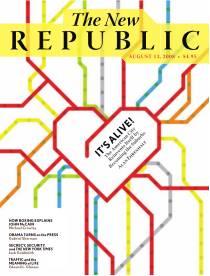Defending the city

Suburban apologists are defending the suburbs against a new found interest in the city. Writer-consultant Joel Kotkin writes in the Sacramento Bee that suburbs have an important regional role, in "The Conversation: Sacramento 2020: Not everyone seeks an urban-core lifestyle and not all jobs are downtown, either. Suburbs have an important regional role."
Of course suburbs have an important regional role.
So do cities.
I wish that he would have advocated for the city over the past decade+, the same time he wrote about the rise and supremacy of the suburbs.
Similarly, in the Financial Times, Roger Wright argues that land use patterns in the U.S. will not change, despite the change in oil prices, in "Shocks fail to break up US car love affair." I think that's pretty facile, and fails to account for all the financial and governmental policies that have favored suburban living. Now that oil prices cannot be subsidized, I think it's fair to say that these land use patterns can change. Love is fickle and isn't just faith. Love for the car was shaped by a wide variety of policies that favored the car over other transportation modes.
Alan Ehrenhalt believes that the center city is on the rise, according to "Trading Places" in the New Republic.
From the article:
We are not witnessing the abandonment of the suburbs or a movement of millions of people back to the city all at once. But we are living at a moment in which the massive outward migration of the affluent that characterized the second half of the twentieth century is coming to an end. For several decades now, cities in the United States have wished for a "24/7" downtown, a place where people live as well as work, and keep the streets busy, interesting, and safe at all times of day. This is what urbanist Jane Jacobs preached in the 1960s, and it has long since become the accepted goal of urban planners. Only when significant numbers of people lived downtown, planners believed, could central cities regain their historic role as magnets for culture and as a source of identity and pride for the metropolitan areas they served. Now that's starting to happen, fueled by the changing mores of the young and by gasoline prices fast approaching $5-per-gallon. In many of its urbanized regions, an America that seemed destined for everincreasing individualization and sprawl is experimenting with new versions of community and sociability.
Labels: sustainable land use and resource planning, urban revitalization, urban vs. suburban



1 Comments:
It has been very useful, I was looking for something similar,greetings and thanks.
Post a Comment
<< Home